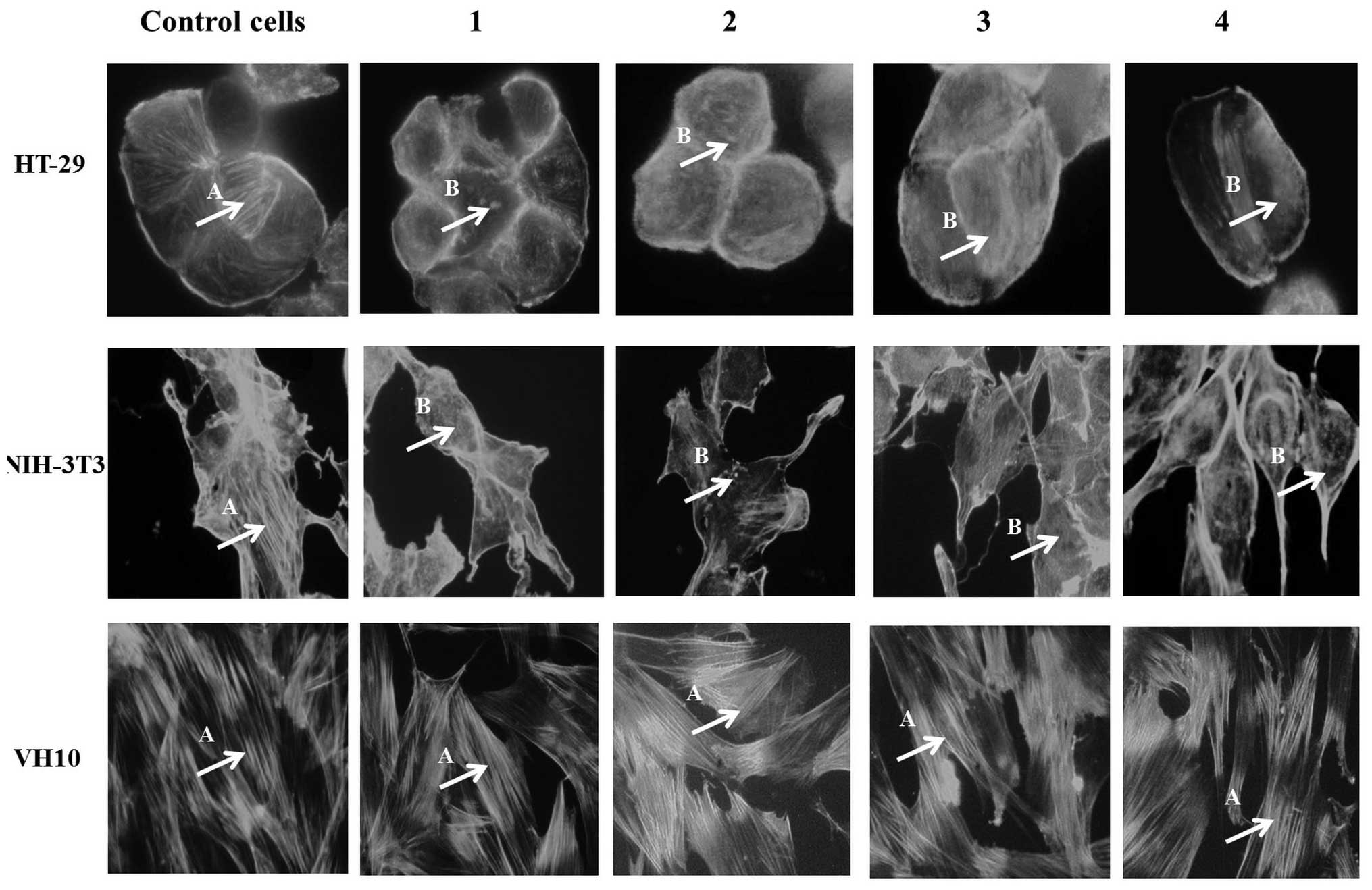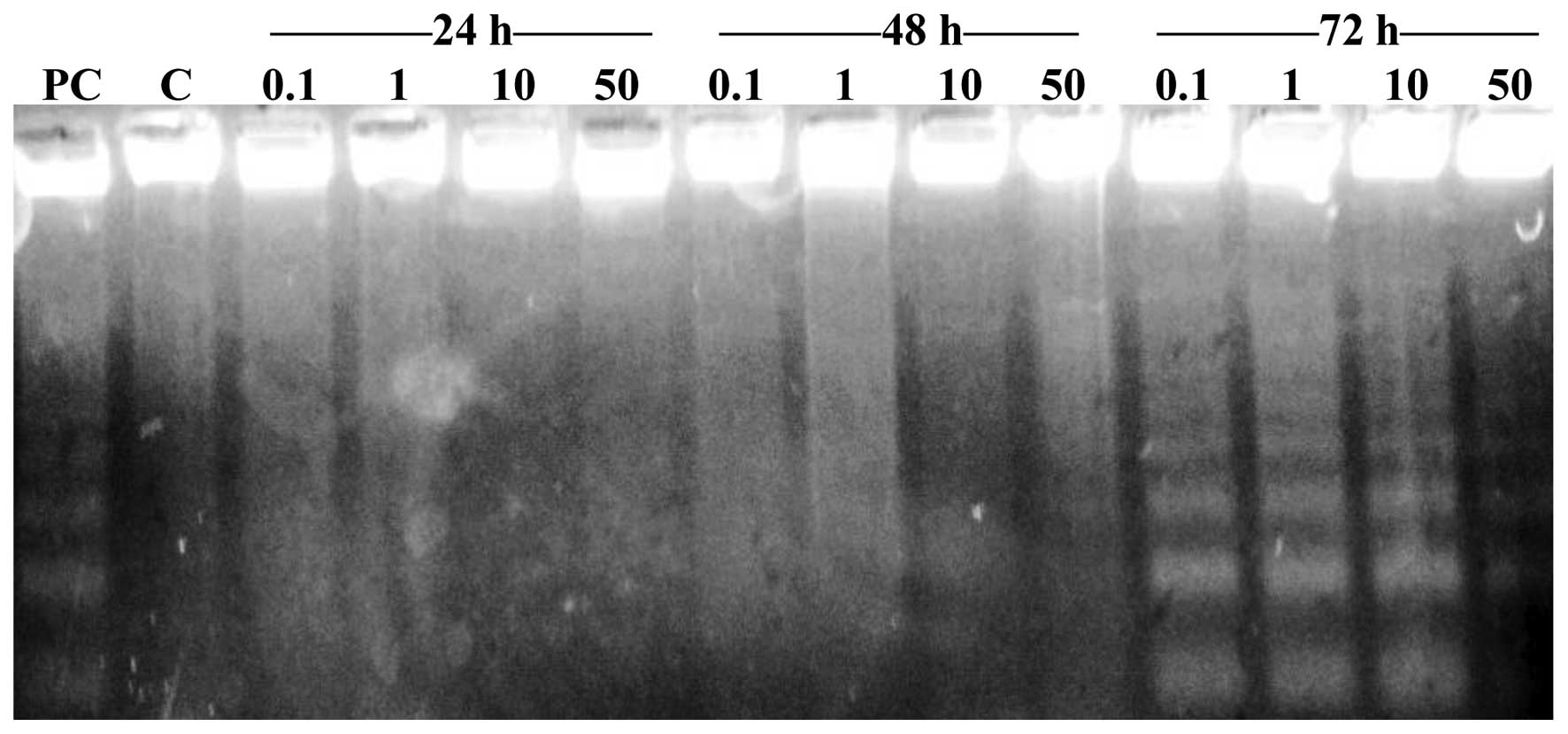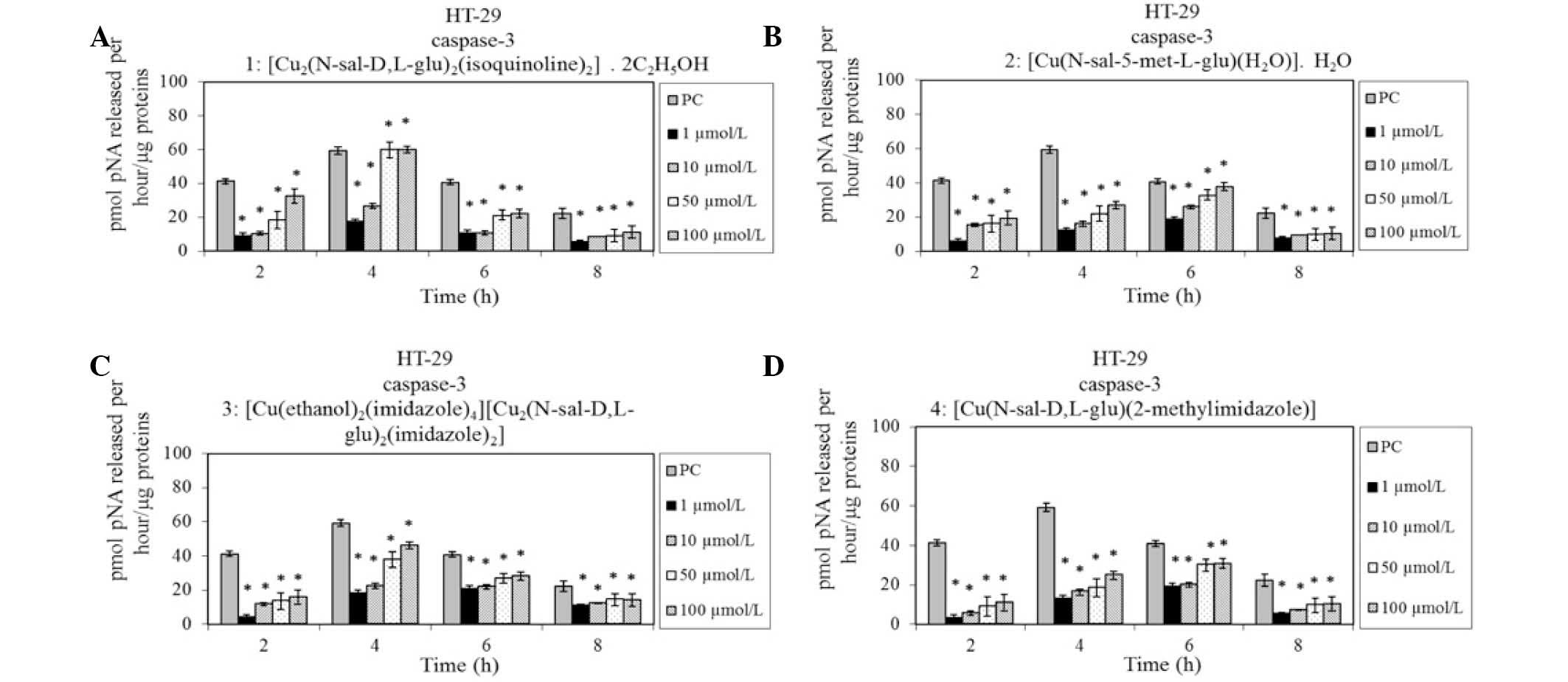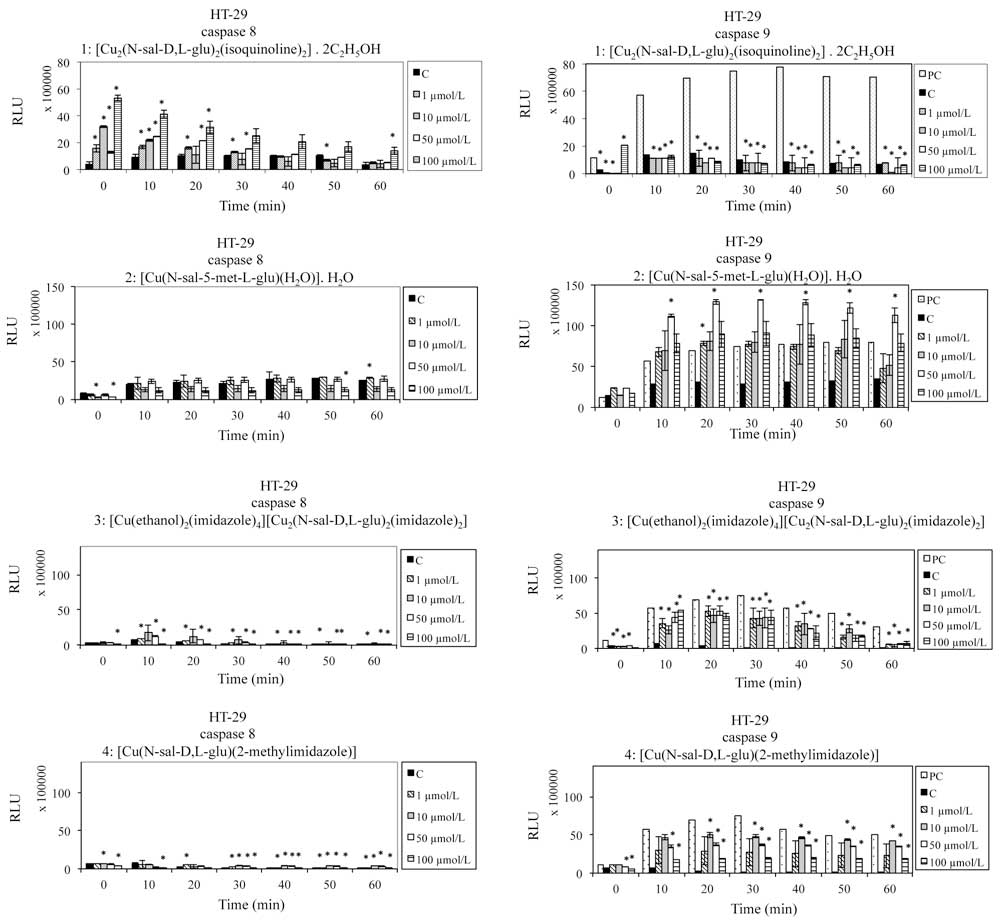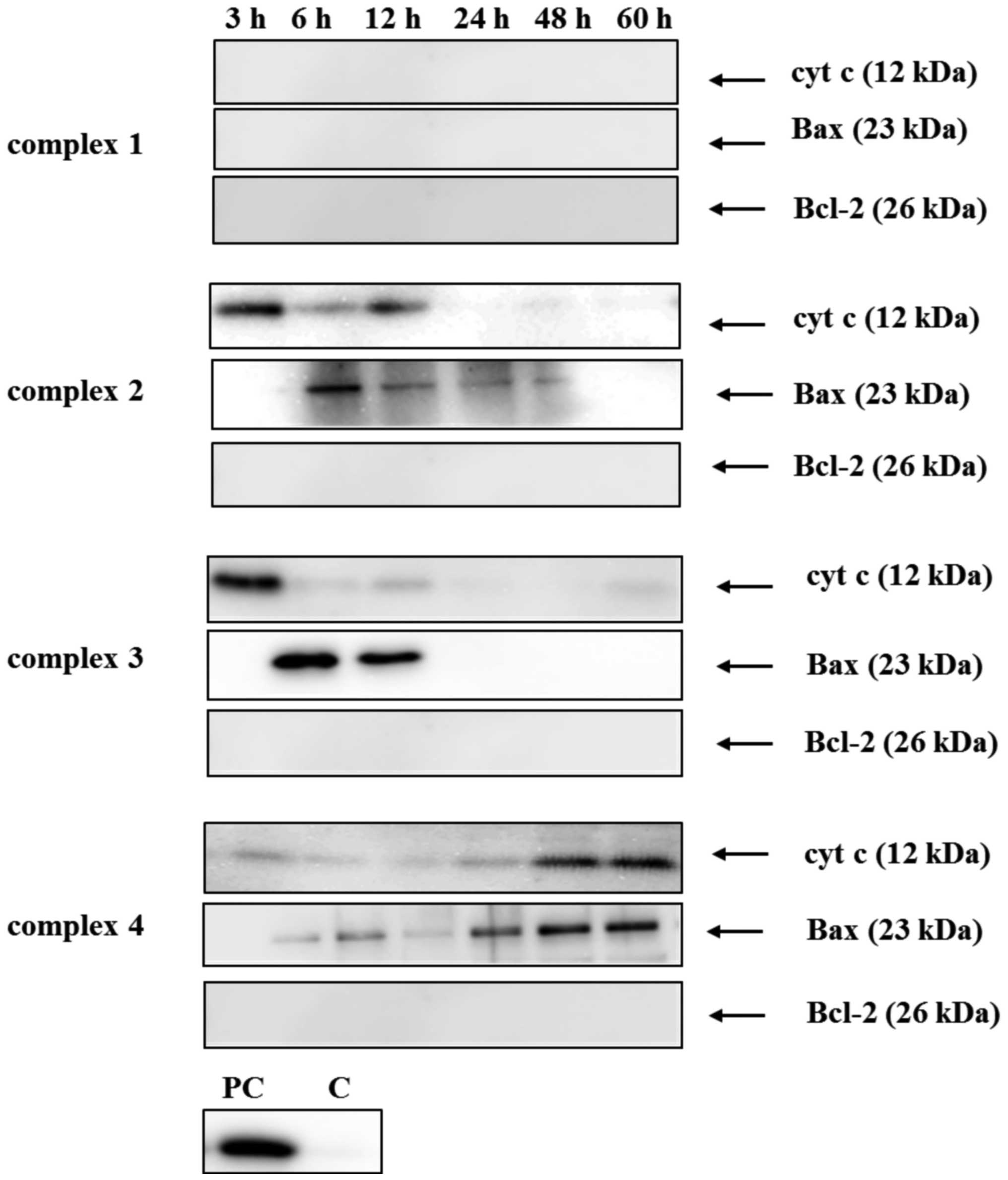|
1
|
Nielsen DL, Palshof JA, Larsen FO, Jensen
BV and Pfeiffer P: A systematic review of salvage therapy to
patients with metastatic colorectal cancer previously treated with
fluorouracil, oxaliplatin and irinotecan +/− targeted therapy.
Cancer Treat Rev. 40:701–715. 2014. View Article : Google Scholar : PubMed/NCBI
|
|
2
|
Funakoshi T, Latif A and Galsky MD: Safety
and efficacy of addition of VEGFR and EGFR-family oral
small-molecule tyrosine kinase inhibitors to cytotoxic chemotherapy
in solid cancers: A systematic review and meta-analysis of
randomized controlled trials. Cancer Treat Rev. 40:636–647. 2014.
View Article : Google Scholar : PubMed/NCBI
|
|
3
|
Lyman GH, Abella E and Pettengell R: Risk
factors for febrile neutropenia among patients with cancer
receiving chemotherapy: A systematic review. Crit Rev Oncol
Hematol. 90:190–199. 2014. View Article : Google Scholar : PubMed/NCBI
|
|
4
|
Miltenburg NC and Boogerd W:
Chemotherapy-induced neuropathy: A comprehensive survey. Cancer
Treat Rev. 40:872–882. 2004. View Article : Google Scholar
|
|
5
|
Damia G and Garattini S: The
pharmacological point of view of resistance to therapy in tumors.
Cancer Treat Rev. 40:909–916. 2014. View Article : Google Scholar : PubMed/NCBI
|
|
6
|
Zayed EM, Zayed MA and El-Desawy M:
Preparation and structure investigation of novel Schiff bases using
spectroscopic, thermal analyses and molecular orbital calculations
and studying their biological activities. Spectrochim Acta A Mol
Biomol Spectrosc. 134:155–164. 2015. View Article : Google Scholar : PubMed/NCBI
|
|
7
|
Emam SM, Sayed IETE and Nassar N:
Transition metal complexes of neocryptolepine analogues. Part I:
Synthesis, spectroscopic characterization and in vitro anticancer
activity of copper(II) complexes. Spectrochim Acta A Mol Biomol
Spectrosc. 138:942–953. 2015. View Article : Google Scholar : PubMed/NCBI
|
|
8
|
Santini C, Pellei M, Gandin V, Porchia M,
Tisato F and Marzano C: Advances in copper complexes as anticancer
agents. Chem Rev. 114:815–862. 2014. View Article : Google Scholar : PubMed/NCBI
|
|
9
|
Creaven BS, Duff B, Egan DA, Kavanaghc K,
Rosaird G, Thangella VR and Walsh M: Anticancer and antifungal
activity of copper(II) complexes of quinolin-2(1H)-one-derived
Schiff bases. Inorganica Chim Acta. 363:4048–4058. 2010. View Article : Google Scholar
|
|
10
|
Khoo TJ, Break MK, Crouse KA, Tahirc MIM,
Alid AM, Cowleye AR, Watkine DJ and Tarafderf MTH: Synthesis,
characterization and biological activity of two Schiff base ligands
and their nickel (II), copper(II), zinc(II) and cadmium(II)
complexes derived from S-4-picolyldithiocarbazate and X-ray crystal
structure of cadmium (II) complex derived from
pyridine-2-carboxaldehyde. Inorganica Chim Acta. 413:68–76. 2014.
View Article : Google Scholar
|
|
11
|
Fei BL, Xua WS, Tao HW, Li W, Zhang Y,
Long JY, Liu QB, Xia B and Sun WY: Effects of copper ions on DNA
binding and cytotoxic activity of a chiral salicylidene Schiff
base. J Photochem Photobiol B. 132:36–44. 2014. View Article : Google Scholar : PubMed/NCBI
|
|
12
|
Nakao Y, Sakurai K and Nakahara A:
Copper(II) chelates of Schiff bases derived from salicylaldehyde
and various α-amino acids. Bull Chem Soc Jpn. 40:1536–1538. 1967.
View Article : Google Scholar
|
|
13
|
Krätsmár-Šmogrovič J, Pavelčík F,
Soldánová J, Sivýa J, Seressová V and Žemlička M: The crystal and
molecular structure and properties of diaqua
(N-salicylidene-L-glutamato)copper (II) monohydrate. Z Naturforsch.
46b:1323–1327. 1991.
|
|
14
|
Langer V, Gyepesová D, Kohútová M and
Valent A: Dimeric (isoquinoline) (N-salicylidene-D,
L-glutamato)copper(II) ethanol solvate. Acta Cryst. C65:208–210.
2009.
|
|
15
|
Langer V, Gyepesová D, Scholtzová E, Mach
P, Kohútová M, Valent A and Smrčok Ľ: Crystal and electronic
structure of aqua(N-salicylidene-methylester-L-glutamato)Cu(II)
monohydrate. Z Kristallogr. 219:112–116. 2004.
|
|
16
|
Langer V, Mach P, Gyepesová D, Andrezálová
L and Kohútová M: X-ray and DFT studies of a mono- and binuclear
copper (II) ionic compound containing a schiff base. Acta Cryst.
C68:M326–M328. 2012.
|
|
17
|
Langer V, Scholtzová E, Gyepesová D,
Kohútová M and Valent A: (N-salicylidene-D, L-glutamato)
(2-methylimidazole)copper(II). Acta Cryst. E60:129–132. 2004.
|
|
18
|
Buzdar AU, Marcus C, Smith TL and
Blumenschen GR: Early and delayed clinical cardiotoxicity of
doxorubicin. Cancer. 55:2761–2765. 1985. View Article : Google Scholar : PubMed/NCBI
|
|
19
|
Chung KK, Zhang Y, Lim KL, Tanaka Y, Huang
H, Gao J, Ross CA, Dawson VL and Dawson TM: Parkin ubiquitinates
the alpha-synuclein-interacting protein, synphilin-1: Implications
for lewy-body formation in parkinson disease. Nat Med. 7:1144–1150.
2001. View Article : Google Scholar : PubMed/NCBI
|
|
20
|
Lim KL, Chew KC, Tan JM, Wang C, Chung KK,
Zhang Y, Tanaka Y, Smith W, Engelender S, Ross CA, et al: Parkin
mediates nonclassical, proteasomal-independent ubiquitination of
synphilin-1: Implications for lewy body formation. J Neurosci.
25:2002–2009. 2005. View Article : Google Scholar : PubMed/NCBI
|
|
21
|
Ho YT, Lu CC, Yang JS, Chiang JH, Li TC,
Ip SW, Hsia TC, Liao CL, Lin JG, Wood WG and Chung JG: Berberine
induced apoptosis via promoting the expression of Caspase 8, −9 and
−3, apoptosis-inducing factor and endonuclease G in SCC-4 human
tongue squamous carcinoma cancer cells. Anti Res. 29:4063–4070.
2009.
|
|
22
|
Xiao Y, Chen D, Zhang X, Cui Q, Fan Y, Bi
C and Dou QP: Molecular study on copper-mediated tumor proteasome
inhibition and cell death. Int J Oncol. 37:81–87. 2010.PubMed/NCBI
|
|
23
|
Rajalakshmi S, Kiran MS and Nair BU: DNA
condensation by copper(II) complexes and their anti-proliferative
effect on cancerous and normal fibroblast cells. Eur J Med Chem.
80:393–406. 2014. View Article : Google Scholar : PubMed/NCBI
|
|
24
|
Thati B, Noble A and Creaven SBS:
Apoptotic cell death: A possible key event in mediating the in
vitro anti-proliferative effect of a novel copper(II) complex,
[Cu(4-Mecdoa)(phen)2] (phen=phenanthroline,
4-Mecdoa=4-methylcoumarin-6,7-dioxactetate), in human malignant
cancer cells. Europ J Pharm. 569:16–28. 2007. View Article : Google Scholar
|
|
25
|
Qiao X, Ma ZY, Shao J, Bao WG, Xu JY,
Qiang ZY and Lou JS: Biological evaluation of a cytotoxic
2-substituted benzimidazole copper (II) complex: DNA damage,
antiproliferation and apoptotic induction activity in human
cervical cancer cells. Biometals. 27:155–172. 2014. View Article : Google Scholar : PubMed/NCBI
|
|
26
|
Barbosa IA, Machado NG, Skildum AJ, Scott
PM and Oliveira PJ: Mitochondrial remodeling in cancer metabolism
and survival: Potential for new therapies. Biochim Biophys Acta.
1826:238–254. 2012.PubMed/NCBI
|
|
27
|
Thomas S, Quinn BA, Das SK, Dash R, Emdad
L, Dasgupta S, Wang XY, Dent P, Reed JC, Pellecchia M, et al:
Targeting the Bcl-2 family for cancer therapy. Expert Opin Ther
Targets. 17:61–75. 2013. View Article : Google Scholar : PubMed/NCBI
|
|
28
|
Liu P, Brown S, Goktug T, Channathodiyil
P, Kannappan V, Hugnot JP, Guichet PO, Bian X, Armesilla AL,
Darling JL and Wang W: Cytotoxic effect of disulfiram/copper on
human glioblastoma cell lines and ALDH-positive cancer-stem-like
cells. Br J Cancer. 107:1488–1497. 2012. View Article : Google Scholar : PubMed/NCBI
|
|
29
|
Zuo J, Bi C, Fan Y, Buac D, Nardon C,
Daniel KG and Dou QP: Cellular and computational studies of
proteasome inhibition and apoptosis induction in human cancer cells
by amino acid schiff base-copper complexes. J Inorg Biochem.
118:83–93. 2013. View Article : Google Scholar : PubMed/NCBI
|
|
30
|
Zhang X, Bi C, Fan Y, Cui Q, Chen D, Xiao
Y and Dou QP: Induction of tumor cell apoptosis by taurine schiff
base copper complex is associated with the inhibition of
proteasomal activity. Int J Mol Med. 22:677–682. 2008.PubMed/NCBI
|
|
31
|
Xiao Y, Bi C, Fan Y, Cui C, Zhang X and
Dou QP: L-glutamine schiff base copper complex as a proteasome
inhibitor and an apoptosis inducer in human cancer cells. Int J
Oncol. 33:1037–1079. 2008.PubMed/NCBI
|
|
32
|
Khan KH, Codesido MB and Molife LR: Cancer
therapeutics: Targeting the apoptotic pathway. Crit Rev Oncol
Hematol. 90:200–219. 2014. View Article : Google Scholar : PubMed/NCBI
|



